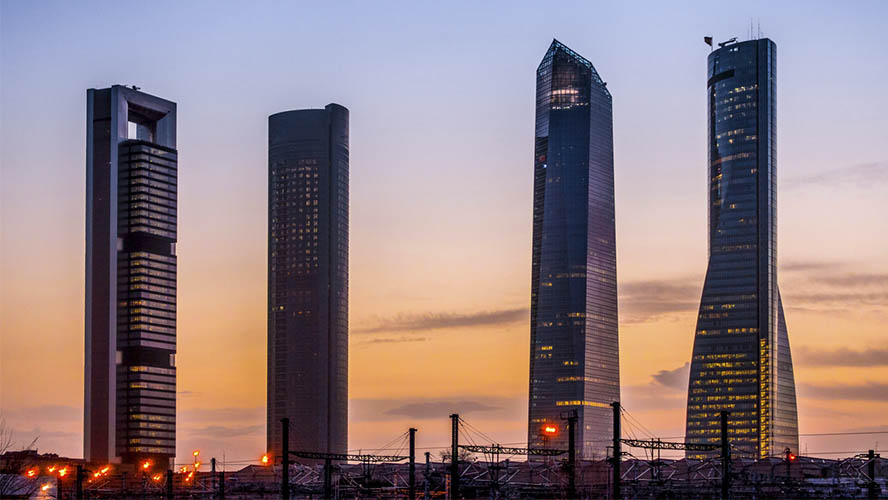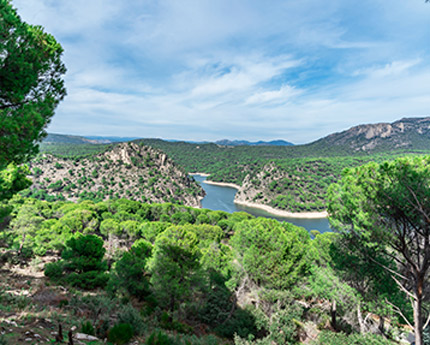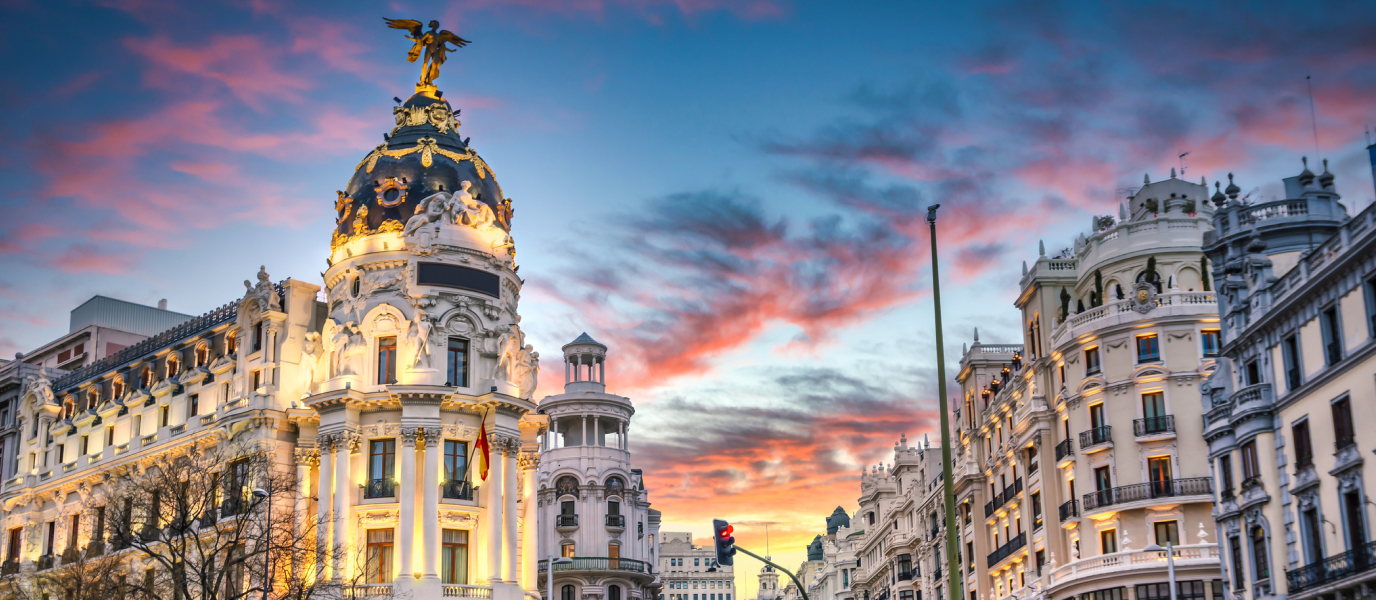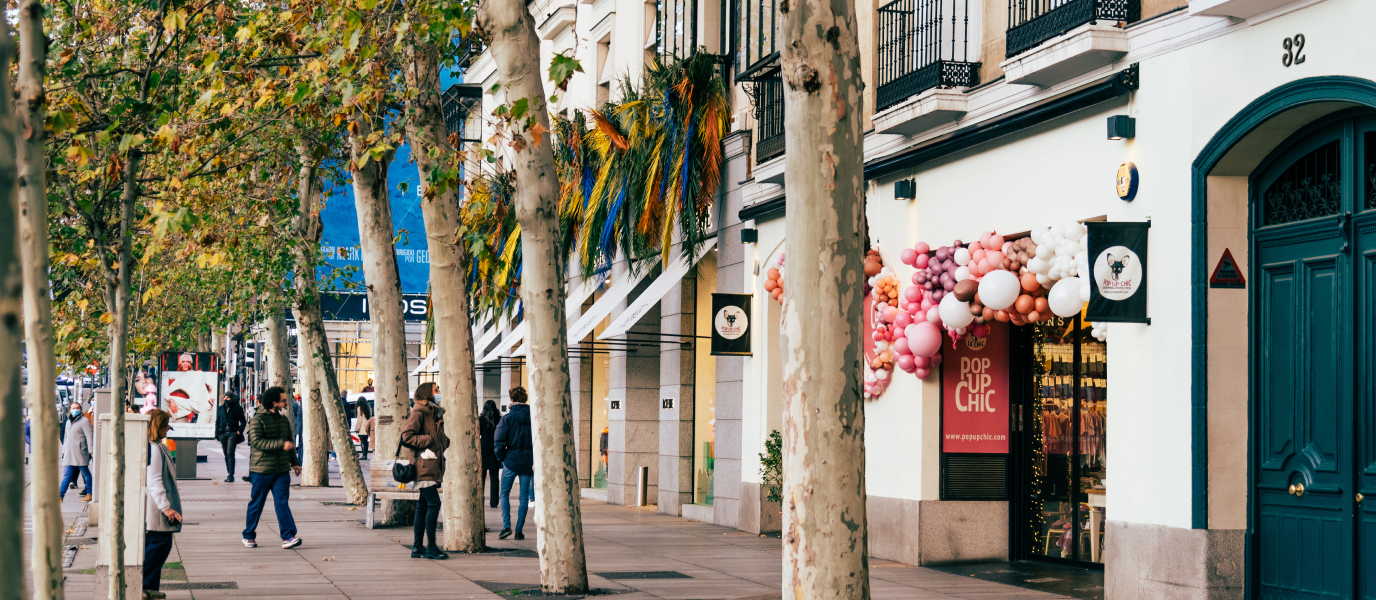To the north of the Almendra Central area of Madrid, at the end of Paseo de la Castellana, stand the tallest towers in Spain. These four skyscrapers, together known as the Cuatro Torres Business Area (CTBA), form a business park that opened at the beginning of 2009 on land once occupied by the old Ciudad Deportiva sports facilities of Real Madrid. Today, the four towers are joined by open spaces, gardens and fountains and the area convincingly represents the most modern and futuristic side of the Spanish capital. And if that weren’t enough, it’s predicted that a fifth tower will be completed in the autumn of 2019 that is destined to change the traditional Madrid skyline forever.
Although the four towers are mainly used as the offices for leading service brands, at present the Torre PwC, previously known as Sacyr-Vallehermoso, is also home to a five star hotel. In addition, the Torre Espacio makes room for a gourmet restaurant and even a religious chapel, which can boast of being the highest sanctuary in Spain at an altitude of 135 m above ground level. Even if you don’t plan to see any of these spaces, it’s worth visiting the base of the towers to enjoy the beautiful views and admire the play of light on their façades.
Skyscrapers that rose from the ashes of Real Madrid
Real Madrid, one of the longest-standing teams in Spain, had used the Chamartín area, specifically the La Paz neighbourhood, as the headquarters for its Ciudad Deportiva sports facilities since 1963. At the time, this area of Madrid lay on the city outskirts but by the end of the twentieth century it had been developed into an important hub within the city.
The soaring land value and delicate financial situation faced by the club led to it move its sports facilities in 2001, freeing up the land as a result. The plot was sold to a consortium of construction companies that, with the approval of the authorities, planned the four impressive towers that today crown the skies above Madrid. Construction started in 2004 and completion was staggered: the Torre Espacio was ready at the end of 2007, the Torre de Cristal was completed at the beginning of 2008, the Torre Cepsa in the middle of 2008 and the Torre PwC at the end of 2009. At first the official name of the complex was Madrid Arena, but the owners soon changed it to the current Cuatro Torres Business Arena.

The four towers at a glance
These days the Cuatro Torres de Madrid are considered genuine icons of the city, just as much as the Cibeles Fountain beloved of Real Madrid fans, or the traditional Puerta de Alcalá. And while these older features can justify their status as symbols of the city thanks to the years of history they have witnessed, the skyscrapers have such a presence that they can even be seen from the far-away mountains of Madrid. Below we take a quick look at each tower:
- Viewed from the east, the first tower on the right is the Torre Espacio, designed by American architect Henry N. Cobb who used a curve that represents the cosine function. It has 57 floors, stands 230 m tall and is known as the “embassy tower” because it’s home to the United Kingdom, Australian and Dutch embassies.
- Immediately next to it is the Torre de Cristal, or Torre KPMG, the work of Argentinian architect César Pelli who was also behind the Petronas Towers in Malaysia. The Torre de Cristal is 249 m tall and has 52 floors that are primarily occupied by offices; it’s the tallest tower in Madrid and the whole of Spain. Some claim that its structure was inspired by an Egyptian obelisk, however, it’s most eye-catching feature is the vertical garden that grows on its sloping roof terrace.
- The third tower on the right is the Torre PwC, the only tower of the four to have been designed exclusively by Spanish architects. It also enjoys the most mixed use, not only containing offices but also a luxury hotel and a restaurant where diners can behold fantastic panoramic views.
- The fourth and final tower is called the Torre Cepsa and was designed by famous architect Norman Foster. At first it was erroneously thought to be the tallest tower in Spain until a study by the CTBUH (Council of Tall Buildings and Urban Habitat) certified the exact height of the skyscraper at 248.3 m, slightly less than the Torre de Cristal.
Surprising facts about the four (or five?) towers
The skyscrapers have managed to generate a significant number of unusual stories during their brief history. For example, in 2006 a fire mysteriously started on the rear part of the Torre Espacio that was in danger of making the entire structure of the building collapse. In 2008, a metal plate came loose from the Torre Cepsa and fell to the ground—fortunately no one was injured. Thanks to the eternal memory of social networks, it’s also hard to forget the two base jumpers who secretly snuck into the Torre de Cristal, climbed to the top and launched themselves into the air before opening their parachutes five seconds later. Or the promotional poster of the recent Robocop remake where the Torre Cepsa sign has been slightly altered so that it looks like a building belonging to the evil OCP corporation.
A fifth tower is currently being built and, if plans don’t change, it will be called Caleido—a Greek word that means “beautiful form”; when it’s finished, it will be time to find a new name for the Cuatro Torres Business Area.






































































